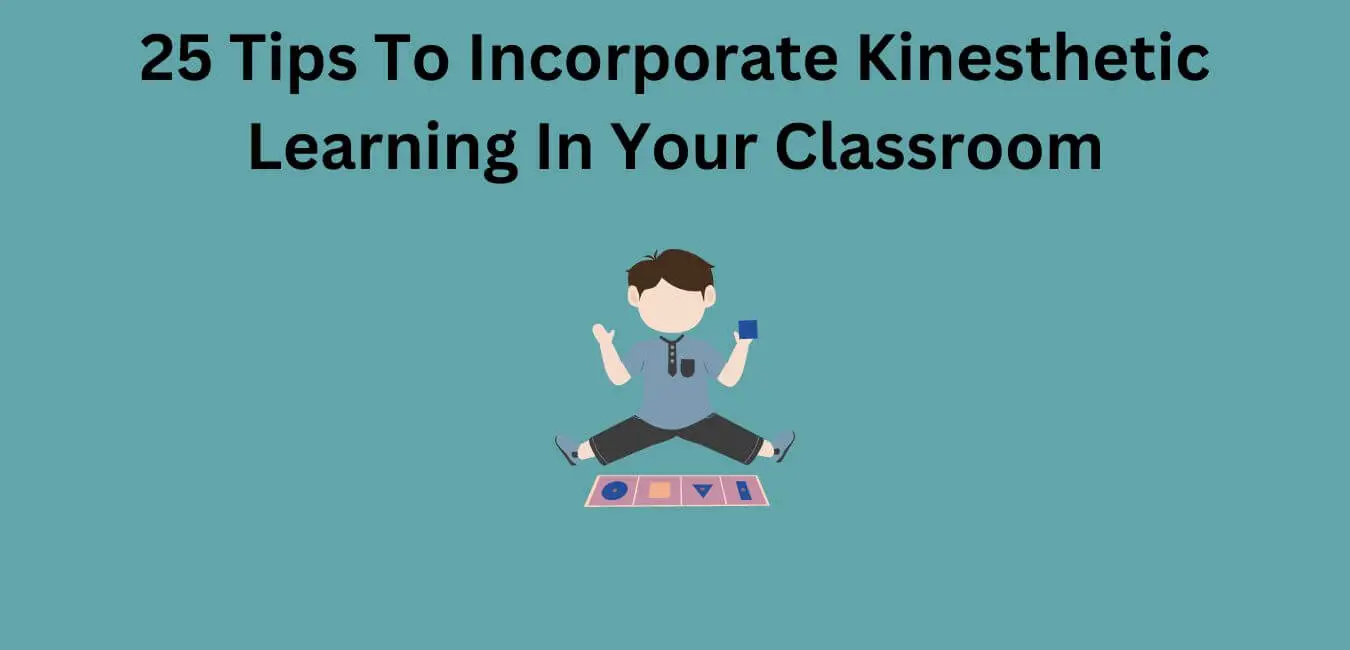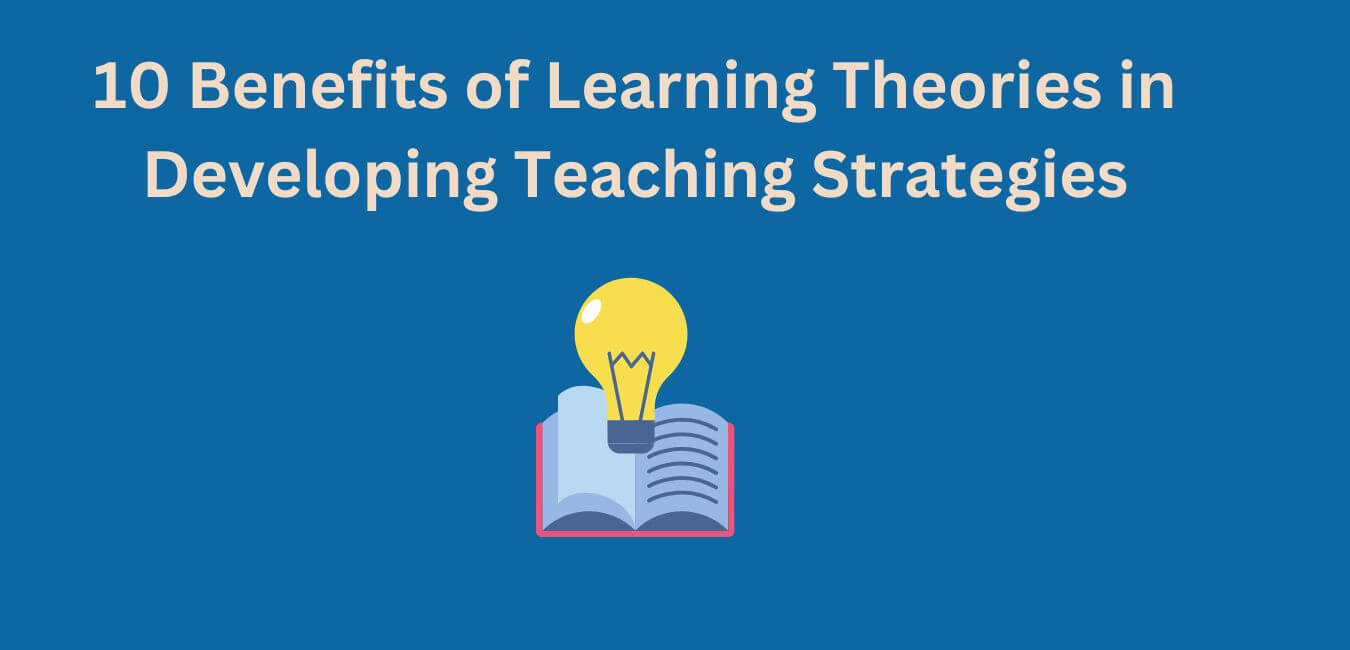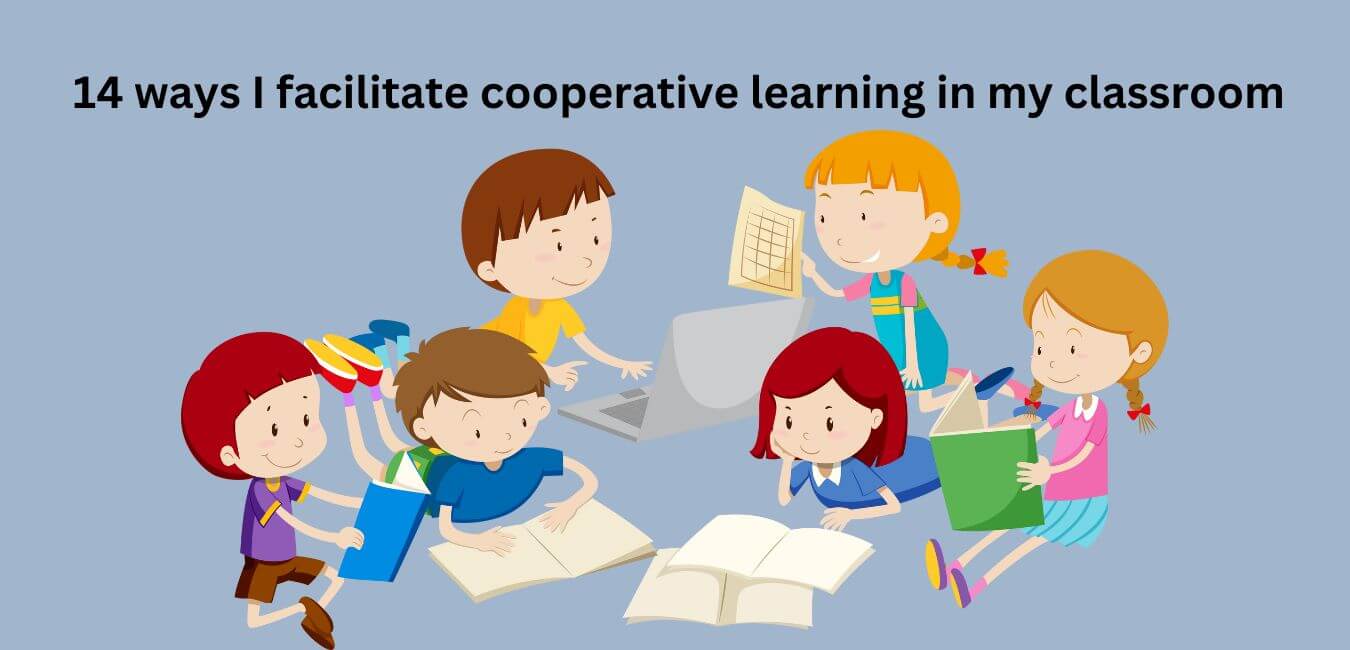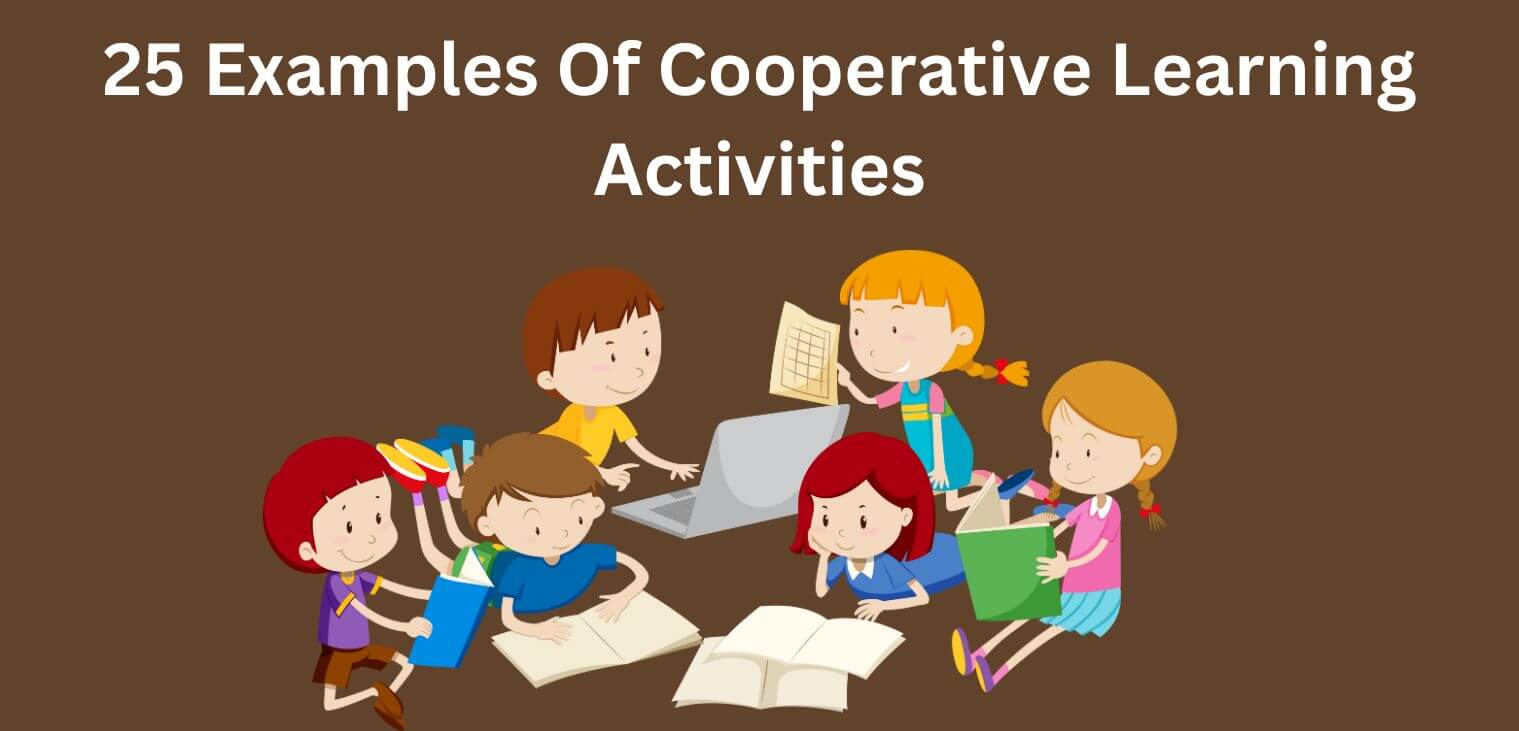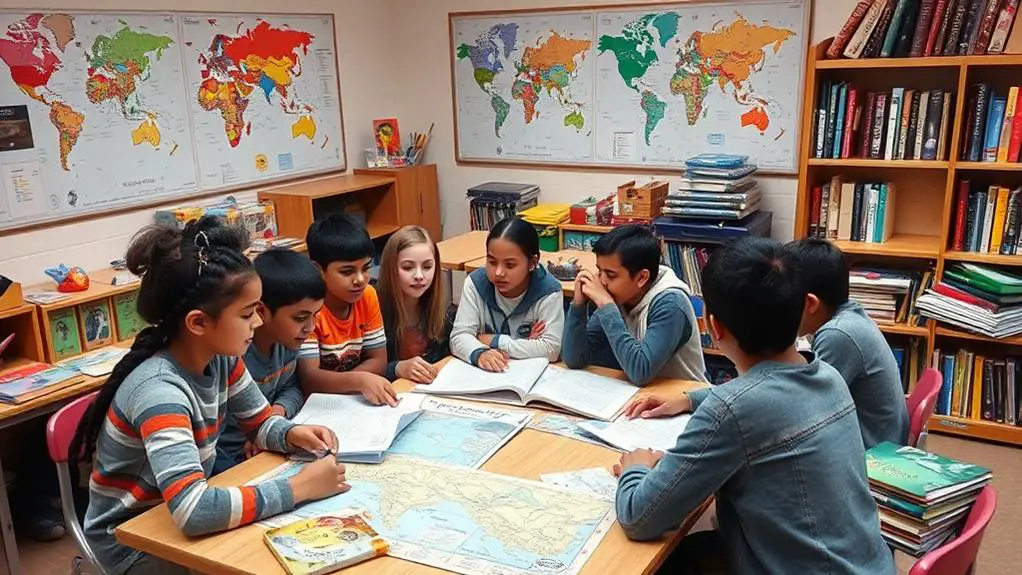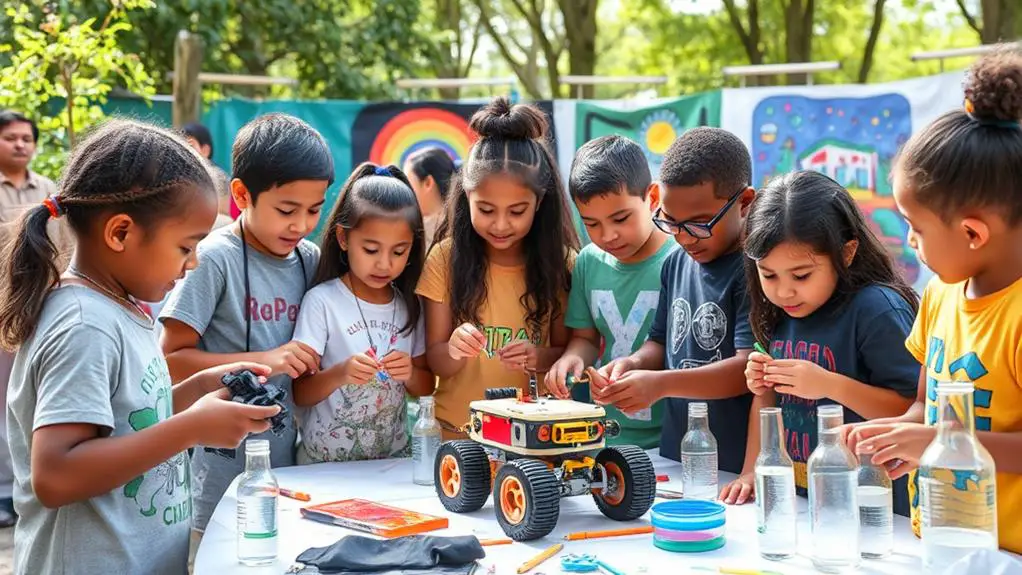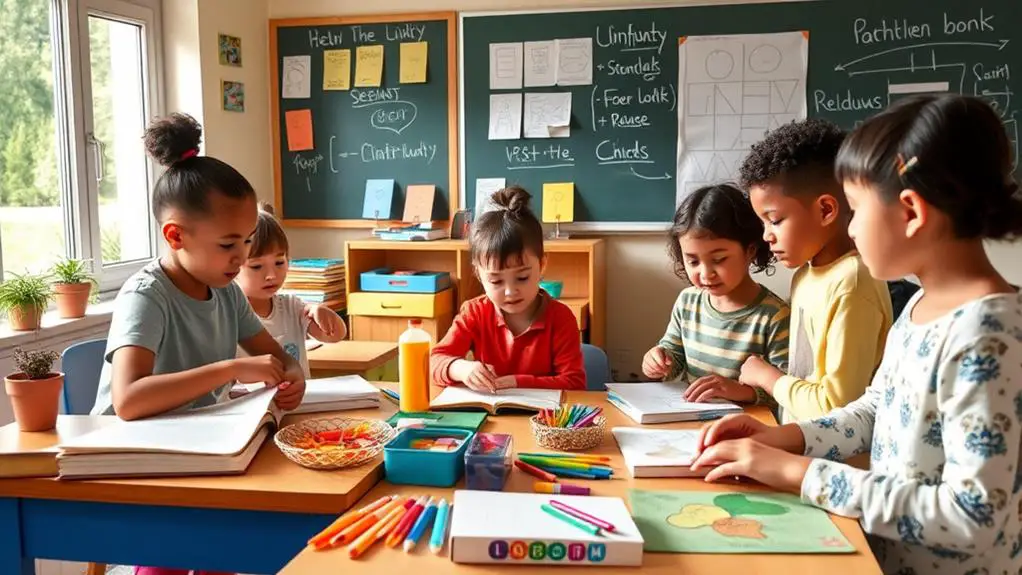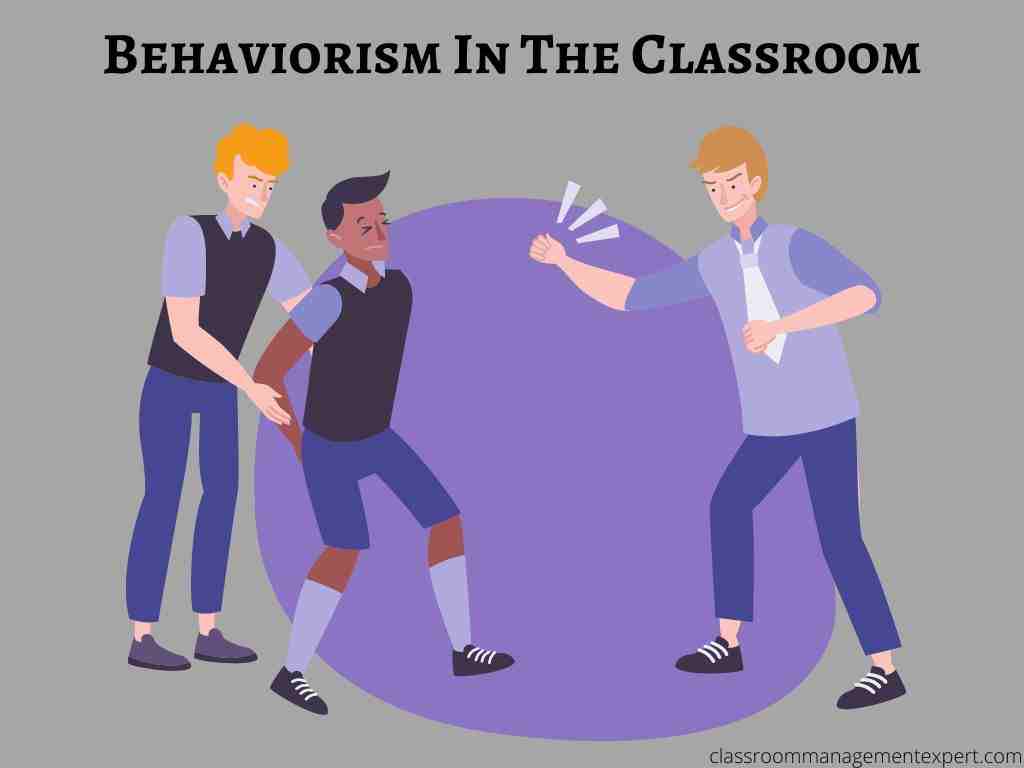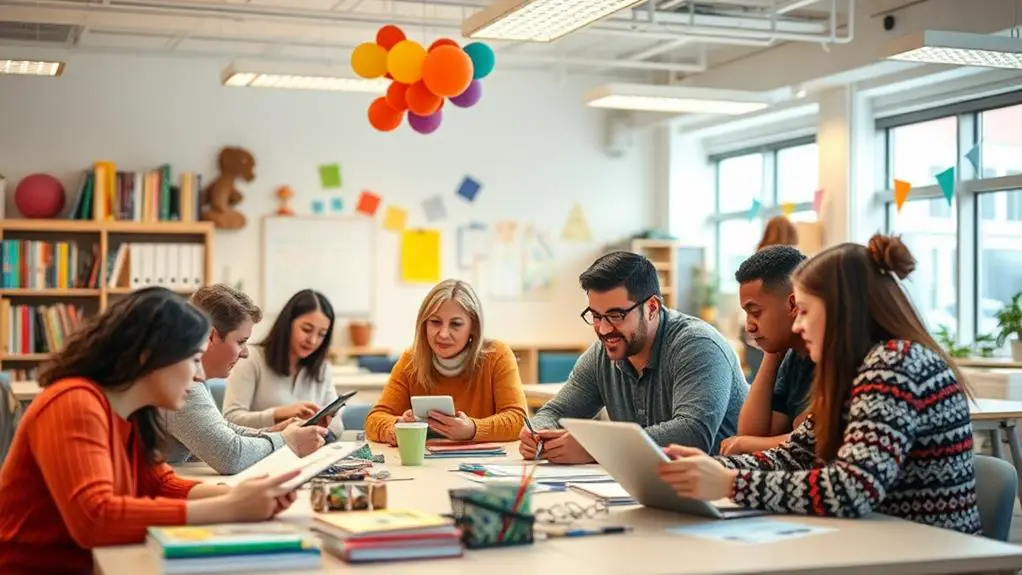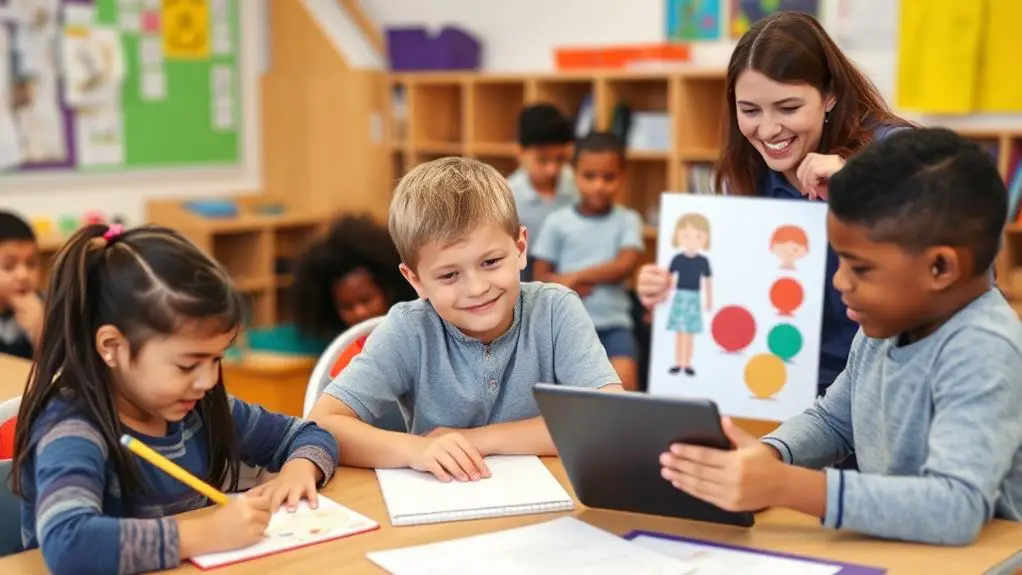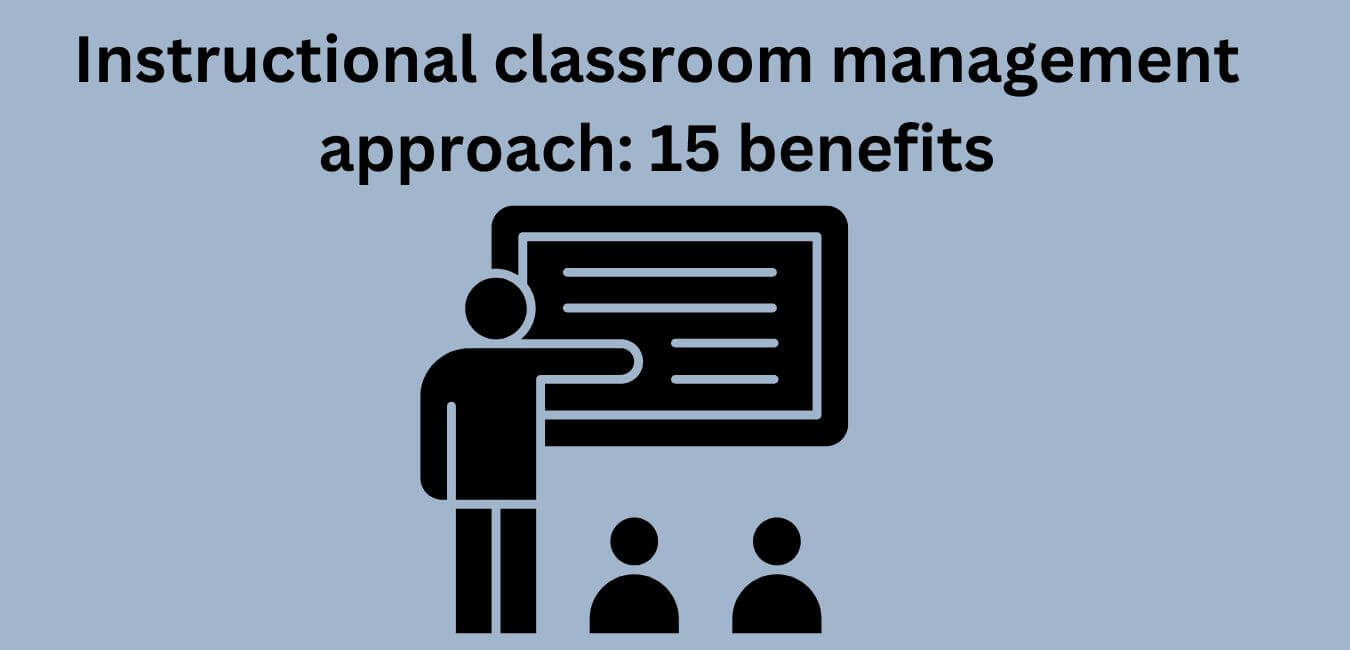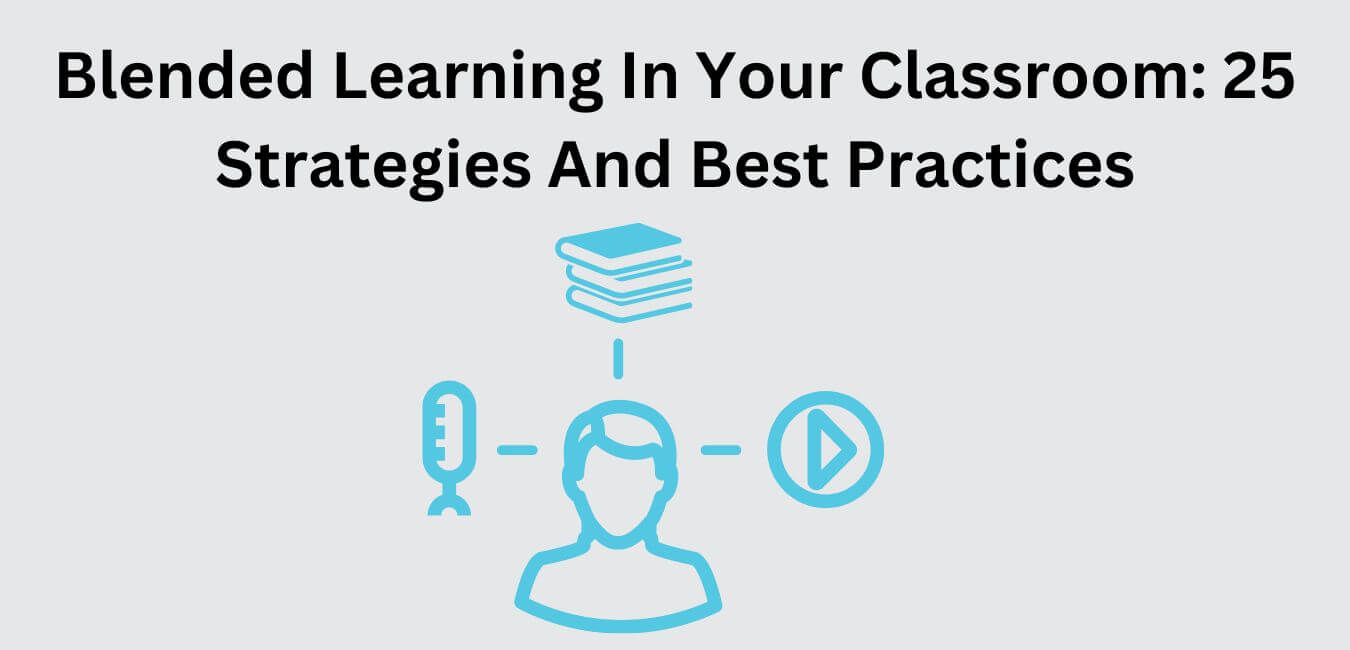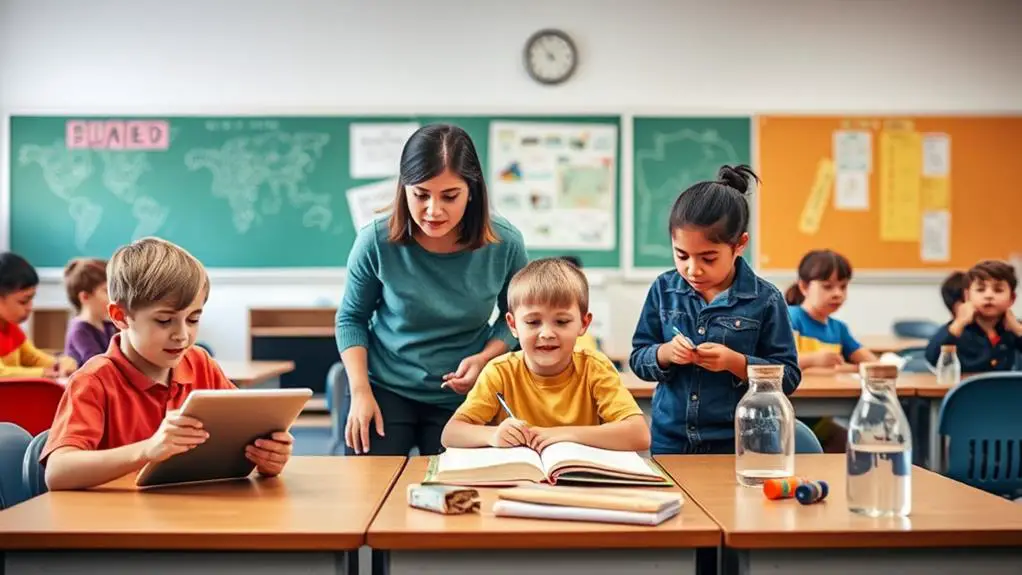Imagine a classroom where learning becomes an exhilarating dance, where knowledge is not just something to be absorbed, but something to be experienced. Welcome to the world of kinesthetic learning, a teaching approach that taps into the power of movement, physical activities, and hands-on experiences.
In this article, we will explore 25 tips to help you incorporate kinesthetic learning in your classroom, transforming it into a vibrant space where students are actively engaged in their own education.
By embracing kinesthetic learning, you will not only cater to the needs of students who thrive in an active environment, but also create an inclusive and dynamic atmosphere that benefits all learners.
From incorporating dance and drama techniques to using manipulatives and educational games, these tips will empower you to bring movement and excitement into your lessons.
So get ready to break free from traditional teaching methods and embark on a journey where learning knows no bounds. Let’s dive in and discover the transformative power of kinesthetic learning!
Key Takeaways
- Encouraging role-play in lessons fosters a safe and supportive environment, empowers students to actively participate in their own education, and transforms the classroom into a dynamic and engaging learning environment.
- Creating hands-on projects ignites the kinesthetic learning experience, applies knowledge in a tangible way, explores creativity and problem-solving skills, and fosters independence and freedom in the learning journey.
- Interactive lessons keep students engaged and excited about learning by incorporating hands-on experiments and demonstrations, encouraging group discussions and debates, utilizing technology for a dynamic and engaging learning experience, and empowering students to explore, discover, and make connections on their own.
- Field trips have advantages such as making real-world connections, encouraging active engagement, fostering personal growth and independence, promoting social interaction and teamwork, and creating memorable experiences.
Tips To Incorporate Kinesthetic Learning In Your Classroom
1. Understanding the Concept of Movement-Based Education
If you want to truly grasp the concept of movement-based education, you’ll need to immerse yourself in the idea that physical activity is not just a break from learning, but an integral part of the learning process itself.
It’s about breaking free from the traditional classroom setup and embracing a more interactive and dynamic approach to teaching and learning. Movement-based education recognizes that students learn best when they are actively engaged in the learning process.
Incorporating kinesthetic learning in your classroom means giving students the freedom to move, explore, and interact with the environment around them.
It’s about creating a learning environment that encourages physical activity and movement. This can be done through various activities such as incorporating physical exercises, hands-on experiments, role-plays, and group discussions that involve movement.
By incorporating movement-based education, you are allowing students to use their bodies to enhance their learning experience. This freedom of movement not only keeps them engaged but also helps them better understand and retain information.
It promotes creativity, critical thinking, problem-solving skills, and collaboration among students.
So, don’t be afraid to let your students get up, move around, and explore new ways of learning. Embrace the idea that learning can happen outside the confines of a traditional classroom.
2. Importance of Physical Activities in Lessons
Why should you include physical activities in your lessons? Well, let me tell you, incorporating physical activities into your lessons can bring a whole new level of excitement and engagement to your classroom. Not only will it make learning more enjoyable for your students, but it will also promote their physical well-being and help them develop important life skills. So, why wait? Get ready to experience the benefits of incorporating physical activities in your lessons!
Here are four reasons why you should embrace physical activities in your classroom:
- Freedom to move: By incorporating physical activities, you give your students the freedom to move around and explore their learning environment in a more dynamic way. This freedom creates a sense of empowerment and can ignite their creativity.
- Enhanced concentration: Physical activities help break the monotony of traditional teaching methods, allowing students to focus better and retain information more effectively. Movement stimulates the brain and improves cognitive function, leading to improved concentration and academic performance.
- Improved social skills: Physical activities encourage students to interact and collaborate with their peers, fostering the development of important social skills such as teamwork, communication, and empathy. These skills are essential for their future success.
- Joyful learning experience: Let’s face it, learning can sometimes be dull and uninspiring. Incorporating physical activities injects an element of fun and excitement into your lessons, making the learning experience more enjoyable for everyone involved.
So, don’t hesitate to incorporate physical activities in your lessons. Give your students the freedom to move, enhance their concentration, develop their social skills, and create a joyful learning experience. Get ready to revolutionize your classroom!
3. Implementing Dance and Drama Techniques
Let’s explore how dance and drama techniques can bring a dynamic and immersive element to your lessons. By incorporating these kinesthetic activities, you can create a classroom environment that is engaging and allows students to express themselves freely. Dance and drama techniques not only promote physical activity but also enhance creativity, collaboration, and critical thinking skills.
To help you get started, here is a table showcasing five dance and drama techniques that you can incorporate into your lessons:
| Technique | Description |
|---|---|
| Freeze Dance | Play music and have students dance freely. When the music stops, they freeze in their current pose, fostering body awareness. |
| Tableaux | Divide students into groups and have them create frozen pictures that represent specific concepts or scenes from your lesson. |
| Role Play | Assign roles to students and have them act out scenarios related to the topic. This encourages empathy and understanding. |
| Improvisation | Allow students to create spontaneous movements or dialogue based on a given theme, encouraging quick thinking and adaptability. |
| Dance Interpretation | Give students a piece of music and ask them to interpret it through movement, encouraging self-expression and interpretation. |
Incorporating these techniques into your lessons not only provides an opportunity for students to physically engage with the content but also allows them to explore their creativity and develop a deeper understanding of the concepts. So, let your students unleash their freedom and watch their learning come to life through dance and drama!
4. Use of Manipulatives in Teaching
Using manipulatives in teaching can greatly enhance your understanding of abstract concepts and promote your active engagement in the learning process. By incorporating hands-on materials, such as blocks, counters, or even everyday objects, you can explore and manipulate these objects to gain a deeper understanding of the subject matter.
Imagine learning about fractions by physically dividing a pizza into equal parts. By using manipulatives, you can visually see how the whole pizza can be divided into halves, quarters, or even eighths. This concrete representation allows you to grasp the concept of fractions more easily and apply it to real-life situations.
Manipulatives also provide an opportunity for you to actively participate in the learning process. Instead of passively listening to a lecture or reading from a textbook, you can physically interact with the materials and actively problem-solve. This hands-on approach encourages your freedom to explore, experiment, and make connections on your own.
In addition, using manipulatives can make learning more enjoyable and engaging. Rather than sitting still and listening, you have the freedom to move around, touch objects, and interact with your classmates. This active participation can increase your motivation, attentiveness, and overall enjoyment of the learning experience.
Incorporating manipulatives in teaching not only enhances your understanding of abstract concepts but also promotes active engagement and a sense of freedom in your learning journey. So go ahead, grab those manipulatives, and dive into a world of hands-on exploration and discovery!
5. Incorporating Educational Games
Incorporating educational games can significantly enhance your engagement as a student and foster a love for learning. Games provide a fun and interactive way to reinforce concepts and skills, allowing you to learn while having a great time. Here’s a table that highlights some educational games and their benefits:
| Game | Benefits |
|---|---|
| Jeopardy | Encourages critical thinking and teamwork |
| Kahoot | Enhances knowledge retention |
| Scavenger Hunt | Promotes problem-solving and collaboration |
| Escape Room | Develops communication and decision-making |
By incorporating these games into your classroom, you can break away from traditional teaching methods and experience a sense of freedom in your learning journey. Educational games not only make the learning process more enjoyable, but they also provide opportunities for you to explore and discover knowledge in a hands-on and interactive way.
So, embrace the freedom of educational games and get ready to immerse yourself in a world of fun and knowledge. Remember, learning doesn’t have to be boring or restrictive. With games, you can unlock your full potential and become an active participant in your own education. Let the games begin!
6. Encouraging Role-Play in Lessons
Immerse yourself in the world of learning by transforming into different characters and exploring new perspectives through engaging in role-play during lessons. Role-playing is a fantastic way to bring learning to life and make it more interactive and enjoyable. Here are a few tips to encourage role-play in your classroom:
- Create a safe and supportive environment: Encourage students to step out of their comfort zones by fostering a safe and judgment-free space where they feel comfortable taking on different roles and expressing themselves freely.
- Provide open-ended scenarios: Give students the freedom to interpret their characters and create their own narratives within the given scenario. This allows for creativity and encourages critical thinking as they explore different perspectives.
- Incorporate props and costumes: Enhance the role-playing experience by providing props and costumes that relate to the topic being studied. This helps students fully immerse themselves in their characters and adds an element of excitement to the learning process.
By incorporating role-play into your lessons, you are empowering your students to actively participate in their own education. So go ahead, embrace the freedom of role-play, and watch as your classroom transforms into a dynamic and engaging learning environment.
7. Creating Hands-On Projects
Now that you have seen the benefits of encouraging role-play in your lessons, let’s dive into the next exciting subtopic: creating hands-on projects. This approach will truly ignite your students’ kinesthetic learning experience and provide them with a sense of freedom to explore and create.
By incorporating hands-on projects into your classroom, you are giving your students the opportunity to actively engage with the material and apply their knowledge in a tangible way. Whether it’s building a model, conducting experiments, or designing a prototype, these projects allow students to explore their creativity and problem-solving skills.
To help you get started, here’s a 2 column and 5 row table that provides some project ideas for different subjects:
| Subject | Hands-On Project Ideas |
|---|---|
| Science | Building a solar-powered car |
| History | Creating a museum exhibit |
| Math | Designing a 3D geometric shape |
| Language Arts | Acting out a scene from a book |
| Art | Creating a mixed media collage |
These hands-on projects will not only make learning more enjoyable for your students but also foster a sense of independence and freedom in their learning journey. So go ahead, embrace the power of hands-on projects and watch your students’ enthusiasm and understanding soar to new heights.
8. The Role of Interactive Lessons
Get ready to supercharge your lessons with interactive activities that will keep your students engaged and excited about learning. Interactive lessons play a crucial role in incorporating kinesthetic learning in your classroom. By allowing students to actively participate in the learning process, you give them the freedom to explore, discover, and make connections on their own.
One way to incorporate interactive lessons is through hands-on experiments and demonstrations. Encourage your students to get their hands dirty as they conduct experiments, manipulate objects, and observe the outcomes. This not only helps them understand abstract concepts better but also gives them the freedom to explore their own ideas and hypotheses.
Another interactive approach is through group discussions and debates. Engage your students in meaningful conversations where they can express their opinions, share their ideas, and challenge each other’s thinking. By fostering a collaborative environment, you empower your students to think critically, communicate effectively, and learn from one another.
Furthermore, incorporating technology can also make your lessons more interactive. Utilize educational apps, online simulations, and interactive whiteboards to create a dynamic and engaging learning experience. This allows students to actively interact with digital content, explore virtual environments, and apply their knowledge in practical ways.
In conclusion, interactive lessons are a powerful tool to incorporate kinesthetic learning in your classroom. By providing freedom and engaging activities, you can create an environment where students can actively participate in their own learning journey. So, get ready to embrace interactive lessons and watch your students thrive.
9. Advantages of Field Trips
Field trips offer numerous benefits that enhance the learning experience and captivate students’ interest. Here are five reasons why incorporating field trips into your classroom can bring a sense of freedom and excitement:
- Real-world connections: Field trips provide an opportunity for students to see and experience concepts they learn in the classroom in real-life settings. This hands-on experience allows them to make connections between what they learn and the world around them.
- Active engagement: Field trips encourage active participation and engagement. Students have the freedom to explore, ask questions, and interact with their surroundings, promoting a deeper understanding of the subject matter.
- Personal growth: Field trips can foster personal growth by challenging students to step out of their comfort zones. They can develop independence, problem-solving skills, and a sense of responsibility as they navigate unfamiliar environments.
- Social interaction: Field trips provide a platform for students to interact with their peers, teachers, and experts in various fields. This interaction promotes teamwork, communication, and the building of new relationships.
- Memorable experiences: Field trips create lasting memories for students. The freedom to explore and learn in a different environment can make a significant impact on their educational journey, making learning more enjoyable and memorable.
Incorporating field trips can add a sense of freedom and excitement to your classroom, giving students the opportunity to learn beyond the confines of a traditional setting. So, embrace the freedom of field trips and watch your students thrive!
10. Integrating Sports into Learning
By integrating sports into your lessons, you can create a dynamic and engaging learning environment. Incorporating physical activities into the classroom not only promotes a healthy lifestyle but also enhances the learning experience. Sports provide an opportunity for students to learn important skills such as teamwork, communication, and problem-solving, while also keeping them active and energized.
One way to integrate sports into your lessons is by incorporating active games and exercises that are related to the subject matter. For example, you can create a math game where students have to solve equations while playing a game of basketball. This not only makes learning more enjoyable but also helps students to better understand and retain the concepts being taught.
Another way to incorporate sports into your lessons is by organizing sports-related projects or competitions. For instance, you can have students research and present on the history and rules of a specific sport, or have them create their own sports-related inventions. This allows students to apply their knowledge and creativity in a fun and interactive way.
By incorporating sports into your lessons, you are providing students with the freedom to learn in a way that suits their interests and abilities. This approach not only fosters a love for learning but also encourages students to take ownership of their education. So, go ahead and get creative with how you integrate sports into your lessons – your students will thank you for it!
11. Promoting Group Activities
Participating in group activities can enhance your learning experience by fostering collaboration and creating a sense of camaraderie among your peers. When you engage in group activities, you have the opportunity to exchange ideas, learn from others, and develop valuable teamwork skills. The freedom to work together allows for a dynamic learning environment where everyone’s strengths can be utilized.
Group activities promote active learning, as they often require movement and interaction. You can engage in hands-on projects, such as building models or conducting experiments, that allow you to physically explore concepts and apply them in real-life scenarios. This kinesthetic approach to learning helps to solidify your understanding and retention of information.
Moreover, group activities encourage critical thinking and problem-solving. Working collaboratively with others allows you to tackle challenges from different perspectives and come up with innovative solutions. By discussing and debating ideas within your group, you can develop a deeper understanding of the subject matter and refine your own thoughts.
In addition, group activities support social and emotional growth. You can develop strong relationships with your peers, creating a supportive network that fosters personal well-being and academic success. Engaging in group activities also helps to build communication and leadership skills, as you learn to express your ideas effectively and coordinate with others.
Incorporating group activities into your classroom not only enhances your learning experience but also prepares you for future endeavors that require collaboration and teamwork. Embrace the freedom to work together and reap the benefits of a more interactive and fulfilling educational journey.
12. Benefits of Interactive Whiteboards
Get ready to experience the incredible benefits of interactive whiteboards that will revolutionize your learning journey. With these amazing tools, you’ll be able to take control of your education and embrace a new level of freedom in the classroom.
Here are three reasons why interactive whiteboards are a game-changer:
- Engaging Learning: Interactive whiteboards allow you to actively participate in the learning process. You can touch, write, and manipulate content on the board, making it a truly interactive experience. No more sitting passively and listening to lectures. Instead, you can actively engage with the material and make it your own.
- Collaborative Environment: These whiteboards foster collaboration among students. You can work together with your peers, brainstorm ideas, and solve problems as a team. The interactive nature of the whiteboard encourages interaction and cooperation, creating a dynamic and engaging classroom environment.
- Visual Learning: Interactive whiteboards offer a visual approach to learning. You can watch videos, view images, and explore multimedia content that brings concepts to life. This visual stimulation enhances understanding and retention of information, making learning more enjoyable and effective.
With interactive whiteboards, you have the power to shape your learning experience. Embrace the freedom to actively engage, collaborate, and visualize your education. Get ready to revolutionize your learning journey!
13. Value of Music in Learning
Melodies in the classroom can magnify motivation and maximize memory retention. When it comes to learning, incorporating music can add a whole new dimension of engagement and excitement. Not only does it make the learning experience more enjoyable, but it also helps to create a sense of freedom and creativity.
By incorporating music into your lessons, you can tap into the power of rhythm and melody to captivate your students’ attention. Whether it’s playing background music during independent work time or using songs to teach new concepts, music can help to create a positive and stimulating learning environment.
Furthermore, music has been shown to enhance memory retention. When information is paired with a catchy tune or a memorable melody, it becomes easier for students to recall and retain that information. So why not create catchy songs or jingles to help your students remember important facts or formulas?
In addition, music can be a great tool for self-expression and creativity. Encouraging your students to explore their musical talents and interests can help them feel a sense of freedom in the classroom. Whether it’s through playing instruments, singing, or composing their own songs, music allows students to express themselves in a unique and personal way.
Incorporating music into your classroom not only adds a fun and enjoyable element to learning, but it also helps to boost motivation and memory retention. So turn up the tunes and watch as your students’ enthusiasm and engagement soar to new heights.
14. Encouraging Stretching and Yoga Breaks
Take a moment to relax and recharge by incorporating stretching and yoga breaks into your daily routine. This will allow your mind and body to find peace and rejuvenation. Here are three ways to make the most out of these breaks and enjoy the freedom they bring:
- Move and stretch: Start by standing up and taking a few deep breaths. Let your body guide you into gentle stretches, reaching towards the sky, touching your toes, and twisting side to side. As you move, feel the tension release and the energy flow through your limbs. Embrace the freedom of movement and let it awaken your senses.
- Practice yoga poses: Choose a few simple yoga poses that resonate with you and your students. Whether it’s the grounding mountain pose, the empowering warrior pose, or the calming child’s pose, encourage everyone to find their own expression and freedom within each pose. Feel the connection between your mind, body, and breath as you hold each pose, allowing yourself to be fully present in the moment.
- Explore mindfulness: During these breaks, invite your students to close their eyes and focus on their breath. Encourage them to observe their thoughts and feelings without judgment, allowing them to come and go freely. By cultivating mindfulness, you create a space for freedom of thought and a deeper connection with yourself and others.
Incorporating stretching and yoga breaks into your classroom routine not only promotes physical well-being but also fosters a sense of freedom and inner peace. Embrace these moments of relaxation and enjoy the freedom they bring to your mind and body.
15. Using Puzzles and Brain Teasers
Puzzles and brain teasers might seem like a waste of time, but they actually provide a fun and engaging way for you to challenge your mind and think critically. These activities can be a great addition to your kinesthetic learning toolbox. Not only do they improve problem-solving skills, but they also promote logical thinking and enhance memory retention.
To incorporate puzzles and brain teasers into your classroom, consider using the following ideas:
| Idea | Description |
|---|---|
| Escape rooms | Set up a mini escape room in your classroom where students have to solve puzzles to “escape” within a given time limit. This activity encourages teamwork and quick thinking. |
| Riddles | Start your class with a riddle that students need to solve. This will stimulate their brains and get them ready for the day’s lesson. |
| Tangram puzzles | Provide students with tangram pieces and challenge them to create different shapes or objects using the given pieces. This activity promotes spatial awareness and creativity. |
| Sudoku | Introduce Sudoku puzzles to your students. This number-based puzzle game helps develop logical thinking and problem-solving skills. |
Remember, incorporating puzzles and brain teasers in your classroom not only adds excitement and engagement but also provides an opportunity for students to think critically and develop essential skills. So, have fun and encourage freedom in exploring these activities!
16. Implementing Real-World Scenarios in Lessons
Now that you’ve mastered the art of using puzzles and brain teasers to engage your students’ kinesthetic learning, it’s time to take it a step further. Get ready to bring the real world into your lessons and create an environment that truly resonates with your students.
By implementing real-world scenarios, you’ll not only make learning more relevant and practical but also ignite a sense of freedom and exploration in your classroom.
Here are four exciting ways to incorporate real-world scenarios into your lessons:
- Role-play: Encourage your students to step into the shoes of different characters and act out real-world situations. This will allow them to experience firsthand the challenges and decision-making processes involved.
- Field trips: Take your students outside the classroom and into the real world. Whether it’s visiting a museum, a local business, or a community project, these hands-on experiences will enhance their understanding and make learning come alive.
- Problem-solving projects: Assign your students real-world problems to solve. This can be anything from designing a sustainable solution to a local issue or creating a business plan for a hypothetical venture. By tackling these challenges, they’ll develop critical thinking and problem-solving skills.
- Guest speakers: Invite professionals from various fields to share their experiences and expertise with your students. This will give them a glimpse into the real world and inspire them to pursue their passions.
So, get ready to set your students free and watch their love for learning soar as you incorporate real-world scenarios into your lessons.
17. Incorporating Art Projects into Learning
By incorporating art projects into lessons, you can unleash your creativity and enhance your understanding of various subjects. Art projects provide an opportunity for you to express yourself freely and explore different ideas. They allow you to think outside the box and make connections between different concepts.
When you engage in art projects, you are not just learning about a specific subject, but you are also developing important skills such as problem-solving, critical thinking, and communication. Art projects give you the freedom to experiment and take risks, which can lead to new discoveries and deeper understanding.
Incorporating art projects in your learning also helps you to connect with the material on a personal level. When you create something with your own hands, you develop a sense of ownership and pride in your work. This sense of ownership can motivate you to further explore the subject and dive deeper into your learning.
Moreover, art projects can be a great way to collaborate and work with your peers. You can engage in group projects, where you can exchange ideas, share perspectives, and learn from one another. This collaborative aspect of art projects not only enhances your understanding of the subject but also fosters teamwork and cooperation skills.
So go ahead and embrace the freedom that art projects offer. Let your creativity shine and watch as your understanding of various subjects deepens and flourishes.
18. Role of Gardening and Nature Walks
Explore the role of gardening and nature walks to connect with the beauty of the natural world and deepen your understanding of the subjects at hand. Engaging in these activities can provide a sense of freedom and exploration, allowing you to tap into your inner creativity and curiosity.
Here are five ways gardening and nature walks can enhance your learning experience:
- Hands-on Experience: Gardening allows you to physically interact with the plants and soil, giving you a deeper understanding of how they grow and thrive. Nature walks expose you to the wonders of the natural world, allowing you to observe and learn about different species of plants and animals.
- Multisensory Learning: Gardening and nature walks engage multiple senses, such as touch, smell, and sight. This multisensory experience enhances your learning by making it more immersive and memorable.
- Promotes Mindfulness: Engaging with nature fosters a sense of mindfulness and presence. It helps you disconnect from the distractions of the digital world and reconnect with the present moment, allowing you to focus on your surroundings and the beauty of nature.
- Encourages Creativity: Gardening and nature walks provide endless opportunities for creativity. You can design your own garden layout, create nature-inspired art, or even write poetry inspired by the beauty around you.
- Promotes Physical Activity: Gardening and nature walks are physical activities that promote exercise and overall well-being. They provide an opportunity to get outside, move your body, and enjoy the benefits of fresh air and sunshine.
So, go ahead and embrace the freedom of gardening and nature walks to enhance your learning experience. Connect with the natural world, engage your senses, and let your creativity flow.
19. Advantages of Collaborative Learning
Unleash the power of collaboration and watch as your learning experience transforms into a dynamic and engaging journey that brings out the best in you. Collaborative learning offers numerous advantages that can greatly enhance your educational experience. By working together with your peers, you not only gain valuable knowledge and skills, but you also develop important social and communication skills that are essential in the real world.
One of the key advantages of collaborative learning is the opportunity to share ideas and perspectives. When you collaborate with others, you bring together a diverse range of thoughts and opinions, leading to a more comprehensive understanding of the subject matter. Additionally, collaborative learning promotes critical thinking and problem-solving skills as you work together to analyze and solve complex problems.
To give you a better idea of the advantages of collaborative learning, here is a table that highlights some of its key benefits:
| Advantages of Collaborative Learning |
|---|
| Encourages teamwork and cooperation |
| Enhances communication skills |
| Fosters creativity and innovation |
By embracing collaborative learning, you are giving yourself the freedom to explore new ideas, challenge conventional thinking, and develop a strong sense of community within your classroom. So, don’t hesitate to collaborate with your peers and unlock the full potential of your learning experience.
20. Using Interactive Technology in Teaching
Using interactive technology in teaching can greatly enhance your learning experience and create a more engaging classroom environment. When you incorporate interactive technology, such as smart boards, tablets, or educational apps, you give yourself the freedom to explore and learn in a way that suits your individual needs and interests.
Interactive technology allows you to actively participate in the learning process. Instead of passively absorbing information, you can now interact with the content, making it more memorable and meaningful. For example, you can use touch screens to solve problems, manipulate virtual objects, or collaborate with classmates on a shared project.
Moreover, interactive technology promotes independent thinking and problem-solving skills. With access to various online resources and tools, you have the freedom to explore different perspectives and find solutions on your own. This fosters critical thinking and creativity, as you are encouraged to think outside the box and find innovative ways to approach a problem.
Additionally, interactive technology can make learning more enjoyable and entertaining. By incorporating gamification elements, such as rewards, challenges, and interactive quizzes, the learning process becomes more engaging and motivating. This freedom to have fun while learning not only increases your interest in the subject matter but also improves your retention and understanding of the material.
In conclusion, using interactive technology in teaching gives you the freedom to actively participate, think independently, and enjoy the learning process. So embrace this technology and experience a more engaging and exciting classroom environment.
21. Encouraging Active Reading
Get ready to actively engage with your reading material, as studies have shown that active readers have a higher comprehension rate than passive readers. So, if you’re looking to boost your understanding and retention of the content, here are three tips to encourage active reading:
- Highlight and underline: Don’t be afraid to mark up your book or use digital tools to highlight important points and underline key ideas. This simple act of physically interacting with the text helps you focus on the most essential information and reinforces your memory.
- Take notes: Summarizing the main points or jotting down your thoughts as you read can further enhance your engagement. Whether it’s in the margins, on a separate notebook, or using digital note-taking apps, jotting down your reflections helps solidify your understanding and creates a personal connection to the material.
- Ask questions: Challenge yourself to think critically about what you’re reading by asking questions. This could be as simple as wondering why the author made a certain argument or how the information relates to real-life situations. By actively seeking answers and contemplating the meaning behind the words, you’ll foster a deeper understanding and personal interpretation of the material.
Remember, the freedom to actively engage with your reading material allows you to take ownership of your learning experience. So, embrace these strategies and make the most out of your reading sessions. Happy reading!
22. Benefits of Peer Teaching
Now that you’ve learned about encouraging active reading, let’s dive into another powerful technique for incorporating kinesthetic learning in your classroom: peer teaching.
Peer teaching is a dynamic approach that allows students to take on the role of both teacher and learner. Not only does it promote active engagement, but it also fosters a sense of autonomy and freedom within the classroom.
One of the main benefits of peer teaching is that it encourages students to take ownership of their learning. By explaining concepts to their peers, students are not only reinforcing their understanding but also gaining confidence in their abilities. This approach also promotes critical thinking and problem-solving skills as students learn to analyze and explain concepts in their own words.
Additionally, peer teaching creates a collaborative learning environment where students can freely express their ideas and engage in meaningful discussions. It fosters a sense of community and encourages students to support and learn from one another.
By incorporating peer teaching into your classroom, you are empowering your students to become active participants in their own education. So, encourage them to embrace their role as both teachers and learners, and watch as their knowledge and passion for learning flourish.
23. Promoting Self-Directed Learning
Take control of your own learning by promoting self-directed learning in the classroom. It’s time to break free from the traditional teacher-centered approach and empower yourself to take charge of your education.
Self-directed learning allows you to explore your own interests and learn at your own pace. No more waiting for the teacher to spoon-feed you information. Instead, you have the freedom to dive deep into topics that truly excite you.
One way to promote self-directed learning is by providing a variety of resources and materials for you to choose from. Whether it’s books, websites, or hands-on activities, having options allows you to explore different avenues of knowledge.
Additionally, encouraging you to set your own learning goals and track your progress gives you a sense of ownership and responsibility over your education.
Another effective strategy is to foster a classroom environment that values curiosity and independence. Instead of relying solely on the teacher for answers, you are encouraged to ask questions, seek out information, and solve problems on your own. This not only enhances your critical thinking skills but also boosts your confidence as a learner.
Remember, you have the power to shape your own learning experience. By promoting self-directed learning, you can take control of your education and discover a newfound sense of freedom and empowerment. So go ahead, embrace the opportunity to learn on your terms.
24. The Role of Cooking and Baking in Education
Discover the exciting world of cooking and baking, and how it can enhance your educational journey. Incorporating cooking and baking into your classroom can provide a unique and engaging way for students to learn. Here are three ways cooking and baking can contribute to a more enjoyable and freedom-filled educational experience:
- Hands-on Learning: Cooking and baking involve a lot of hands-on activities, allowing students to physically engage with the materials and concepts they are learning. This kinesthetic approach helps students better understand and retain information.
- Creativity and Problem-Solving: Cooking and baking require students to think creatively and solve problems. They need to follow recipes, measure ingredients, and make adjustments if something doesn’t turn out as expected. This fosters critical thinking skills and encourages students to explore different solutions.
- Real-World Application: Cooking and baking provide real-world applications for various subjects such as math, science, and even history. Students can practice measuring and converting units, understand chemical reactions, and explore the cultural significance of different recipes. This practical approach makes learning more meaningful and relatable.
By incorporating cooking and baking into your classroom, you can create an environment that promotes freedom and self-expression. Students can explore their creativity, take ownership of their learning, and develop essential life skills. So, grab your aprons and let the culinary journey begin!
25. Importance of Regular Feedback and Assessments
Feedback is the secret ingredient that adds flavor to your educational journey, allowing you to rise to your full potential. It is the essential tool that empowers you to take control of your own learning experience. Regular feedback and assessments not only provide valuable insights into your progress, but also give you the opportunity to reflect on your strengths and areas for improvement.
Incorporating regular feedback and assessments into your classroom routine allows you to actively participate in your own education. It gives you the freedom to explore different learning strategies and adapt them to suit your individual needs. By receiving feedback on your performance, you can identify areas where you excel and areas where you may need to put in extra effort. This knowledge empowers you to take ownership of your learning and make informed decisions about how to improve.
Additionally, regular feedback and assessments help you to develop important skills such as critical thinking, problem-solving, and self-reflection. They encourage you to think deeply about your work, analyze your progress, and set goals for the future. This process of continuous self-assessment fosters a growth mindset, where you are constantly striving to improve and achieve your personal best.
In conclusion, feedback and assessments are essential ingredients in the recipe for a successful learning experience. Embrace the freedom they provide and use them as tools to unlock your full potential. By actively seeking and applying feedback, you can transform your education into a truly enriching and empowering journey.
Conclusion
So, now you’ve reached the end of this article, and I hope you’re feeling inspired.
You have learned about the power of kinesthetic learning and how it can transform your classroom.
By incorporating movement, dance, drama, manipulatives, games, and more, you can engage your students in a whole new way.
Imagine their excitement as they learn through cooking and baking, and watch their confidence grow through self-directed learning.
Don’t forget the importance of feedback and assessments to ensure their progress.
So, go out there and embrace the joy of learning through movement!

